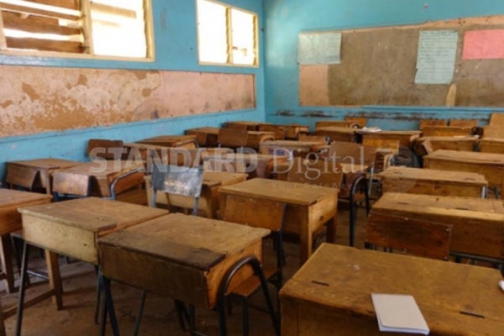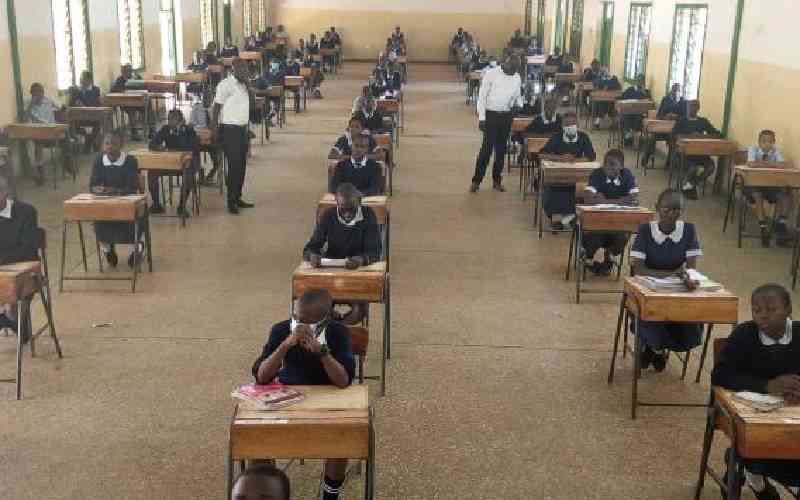
Public school students are performing poorly compared to their counterparts in private schools as evidenced by the 2015 Kenya Certificate of Primary Education (KCPE) exam results. A number of reasons have been raised as causes for this dismal performance. Amongst these are teachers’ strikes and lack of exam preparedness. Teacher absenteeism has however been cited as single-most contributor to the poor performance witnessed in public schools.
Teacher absenteeism denies students the much need teacher-student contact time, the time spent by teachers in interacting with students, contributing hugely to student performance. Adequate exam preparation by student and teachers is also valuable. As a result of the over one-month long teachers strike in 2015, students lost over 280 active learning minutes per day translating to 140 hours in just one term.
Studies have shown that teacher absenteeism is a common phenomenon in public schools across the country and is one of the major causes of poor performance in schools. For instance, a study, “Quality and Access to Education in Urban Informal Settlements in Kenya”, conducted by the African Population and Health Research Center (APHRC) in 2012, found a great correlation between teacher-student contact and the pupil’s performance. Teacher absenteeism was a common phenomenon among the study counties of Mombasa, Nairobi, Nyeri, Nakuru, Eldoret and Kisumu and in particular among teachers in public schools. Further, only 35% of teachers surveyed from public schools indicated that they are never away from their work stations.
What causes Teacher Absenteeism?
Lack of job satisfaction leading to low morale, lack of personal competence, bad weather conditions, poor working conditions, illness are cited as some of the causes of absenteeism. Others are, lack of regular supervision and assessment, assigning non-teaching duties to teachers, teachers strike, lack of harmony between parents and teachers.
However, these reasons manifests differently and have different magnitudes when it comes to overall teacher absenteeism. According to the APHRC 2012 study, teachers’ reasons for being absent include domestic responsibilities (17%), attending training or professional development (16%), attending departmental committee meetings (9%), consultation with other teachers (6%), and attending union meetings (4%).
Can Teacher Absenteeism be solved?
YES. Teacher absenteeism in public schools can be addressed and must be addressed urgently. Any loss of time on any day—for whatever reasons— affects teacher-student contact which leads to learning gaps such as lack of completion of syllabus, weak mastery of the subject matter and poor preparedness. Though addressing this may seem a tall order, all remedies revolve around two issues: Supervision and Management.
According to the study, teacher supervision at the school level should be tightened. The paradox is that while most teachers actually go to school, only some actually go to class to teach. Head teachers play a role in giving instructional leadership, and they should manage cases of absenteeism. “How is it possible that a pupil in class seven is taught math only four times in a term of 12 weeks? We need answers from the head teacher after which we need him out,” a parent was quoted in the Standard Newspaper on January 7, 2016.
School management committees should as well do their job of overseeing the management of their schools. They have a substantive role to play when it comes to running and managing schools. They should hold the teachers responsible for whatever happens within classrooms. With this study revealing that, on average, only less than 40 per cent of head teachers in low-performing schools are present daily compared to 75 per cent of those in high-performing schools, schools management committees can help identify non-performing head teachers and report them for action to be taken.
Third, the government should address amicably the issue of teachers’ strike that is likely to become an annual activity for teachers in public schools. There needs to be an acknowledgement of why the teachers go on strike almost yearly. An audit, and a wider one for that matter, of the big picture education challenges in Kenya has to be done. Issues such as the low salaries for public school teachers, poor working conditions, inadequate benefits, failure to address challenges of hardships amongst others precipitate low morale which leads to absenteeism and MUST be addressed judiciously.
Mend it or Break it? We have a choice to make
We can choose to mend it or break it. As a country, and specifically those charged with managing the education sector, we can choose to address teacher absenteeism. If we mend it, the performance of students attending public schools will be improved leading to greater enrolment and thus more people accessing this public good.
Failure to address teacher absenteeism may lead to breaking the public education sector. Does this mean there will be no more public schools? Is this what the country needs? I bet not, because if so, then the initiatives to improve delivery of basic education could not have been put in place.
Stay informed. Subscribe to our newsletter
We owe it to the children of this country to invest in proper supervision and management of the education sector. We have to make a choice: We mend it and we make public education attractive or we break it and we bury public education.
 The Standard Group Plc is a
multi-media organization with investments in media platforms spanning newspaper
print operations, television, radio broadcasting, digital and online services. The
Standard Group is recognized as a leading multi-media house in Kenya with a key
influence in matters of national and international interest.
The Standard Group Plc is a
multi-media organization with investments in media platforms spanning newspaper
print operations, television, radio broadcasting, digital and online services. The
Standard Group is recognized as a leading multi-media house in Kenya with a key
influence in matters of national and international interest.
 The Standard Group Plc is a
multi-media organization with investments in media platforms spanning newspaper
print operations, television, radio broadcasting, digital and online services. The
Standard Group is recognized as a leading multi-media house in Kenya with a key
influence in matters of national and international interest.
The Standard Group Plc is a
multi-media organization with investments in media platforms spanning newspaper
print operations, television, radio broadcasting, digital and online services. The
Standard Group is recognized as a leading multi-media house in Kenya with a key
influence in matters of national and international interest.







